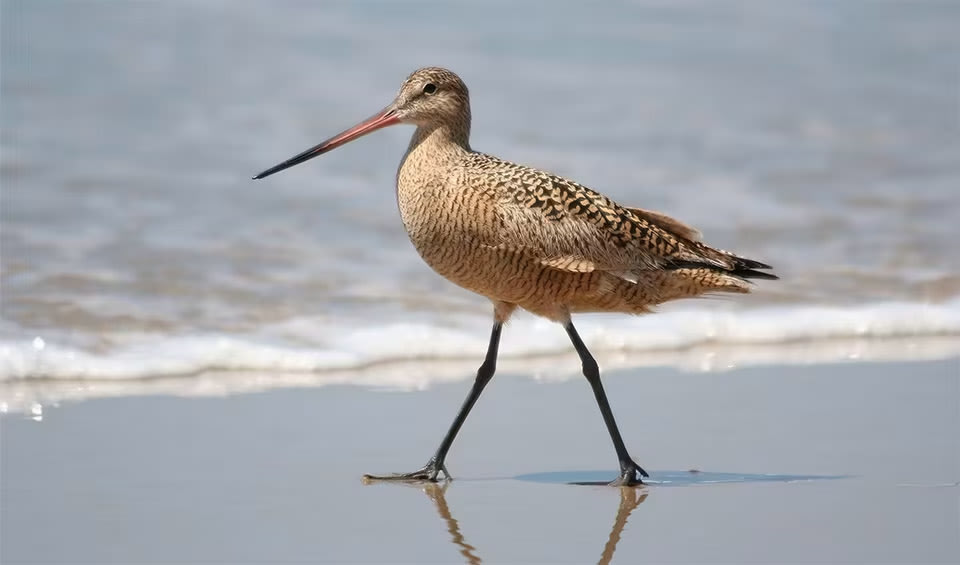Limosa – Godwits
They have been recorded as the most extended flying bird – flying more than 12km (7.5 miles)
Godwits are large, long-billed, long-legged wading birds. They are uniquely adapted to a life spent foraging in mudflats, marshes, and wetlands.
One of the most distinctive features of godwits is their long, straight, or slightly upturned bills, which they use to probe deep into mud and sand for aquatic invertebrates and crustaceans. The length and shape of the bill vary among species and even between sexes within the same species, with females typically sporting longer bills than males.
Godwits exhibit a notable difference in plumage between seasons. Non-breeding plumage tends to be fairly drab, with greyish or brownish tones on the upper parts and paler underparts. During the breeding season, they undergo a dramatic transformation, with their plumage turning a rich rufous or brick red, particularly on the neck and underparts. This change serves not only to attract mates but also to provide camouflage in the breeding habitats, which are often characterized by brownish-red vegetation.
The ability to differentiate between godwit species is often dependent on subtle features, including the pattern of barring on their wings and tail. For instance, the Bar-tailed godwit has a barred tail and rump, while the Black-tailed godwit has a solid black tail and a white rump.
Godwits are also known for their remarkable migratory journeys. Some populations of the Bar-tailed godwit hold the record for the longest non-stop flight of any bird. During migration, they can travel thousands of kilometers without stopping for food or rest. These birds have adapted to such extreme endurance flights by storing up large reserves of fat and shrinking non-essential internal organs to minimize weight during their long-distance flights.
Species in this genus
Black-tailed godwit
The most elegant of all godwit species


